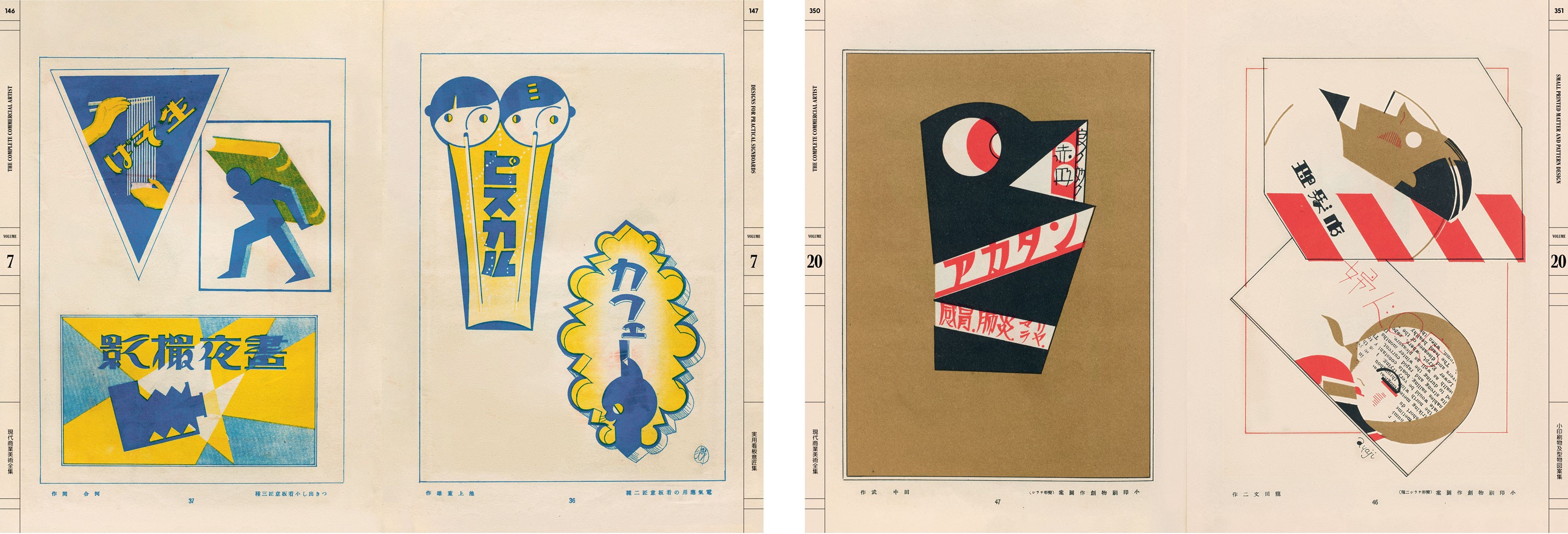The 1920s marked a period of rapid transformation in Japanese visual culture, a dynamic shift documented in the landmark publication The Complete Commercial Artist. This 24-volume compendium, originally titled Gendai shōgyō bijutsu zenshū, offers a comprehensive overview of commercial design in Japan between 1928 and 1930. Resurrected by Letterform Archive, The Complete Commercial Artist: Making Modern Design in Japan, 1928–1930 provides unprecedented access to this historical treasure trove, revealing the innovative spirit of Japanese designers during this pivotal era.
Delving into Japan’s Design Revolution
Art historian Gennifer Weisenfeld expertly guides readers through the intricacies of The Complete Commercial Artist, offering insightful commentary and historical context. With meticulous detail, Weisenfeld unravels the significance of each volume, showcasing the diverse range of design styles that emerged during this period. From constructivist storefronts and Bauhaus-inspired photo collages to Art Deco letterforms and striking posters, the book unveils a vibrant design landscape that seamlessly blended modernism with traditional Japanese aesthetics.
The Complete Commercial Artist served not only as a source of inspiration for contemporary designers but also as a platform for disseminating cutting-edge design practices. The publication featured contributions from over 70 prominent figures in the Japanese design world, including renowned designers, educators, and journalists. Edited by Hamada Masuji, a leading force in the Commercial Artists Association, the compendium aimed to elevate commercial art to a new level of sophistication and recognition.
Uncovering Hidden Gems: Content and Contributors
Beyond its visual splendor, The Complete Commercial Artist boasts a wealth of valuable content. Each volume delves into specific aspects of commercial design, offering practical guidance and theoretical insights. Topics covered include poster design, show window displays, signboards, advertising techniques, lettering, illustration, and trademark design. The book also features a translated excerpt from Hamada Masuji’s utopian essay, providing a glimpse into the philosophical underpinnings of the movement.
Biographies of key contributors further enrich the narrative, shedding light on the individuals who shaped the landscape of Japanese commercial art. Profiles include luminaries like Sugiura Hisui, principal designer for the Mitsukoshi department store, and Watanabe Soshū, a prominent author and design educator. These biographical sketches provide a deeper understanding of the creative minds behind the designs and their contributions to the broader cultural context.
A Modern Masterpiece Revisited
The Complete Commercial Artist: Making Modern Design in Japan, 1928–1930 is more than just a reprint; it’s a meticulously crafted revival of a design classic. Weisenfeld’s insightful introduction and detailed volume-by-volume analysis provide a comprehensive understanding of the publication’s historical significance and enduring legacy. The book’s stunning full-color reproductions faithfully capture the original artwork’s vibrancy, offering a captivating visual journey into the heart of Japan’s design revolution.
The Enduring Impact of “Covert Japan Full”
The Complete Commercial Artist stands as a testament to the ingenuity and artistry of Japanese designers during a period of profound cultural change. This comprehensive collection, meticulously curated and expertly analyzed, provides an unparalleled resource for anyone seeking to understand the evolution of modern design in Japan. Its rediscovery offers a valuable opportunity to explore the rich history of Japanese visual culture and its lasting impact on the global design landscape.

